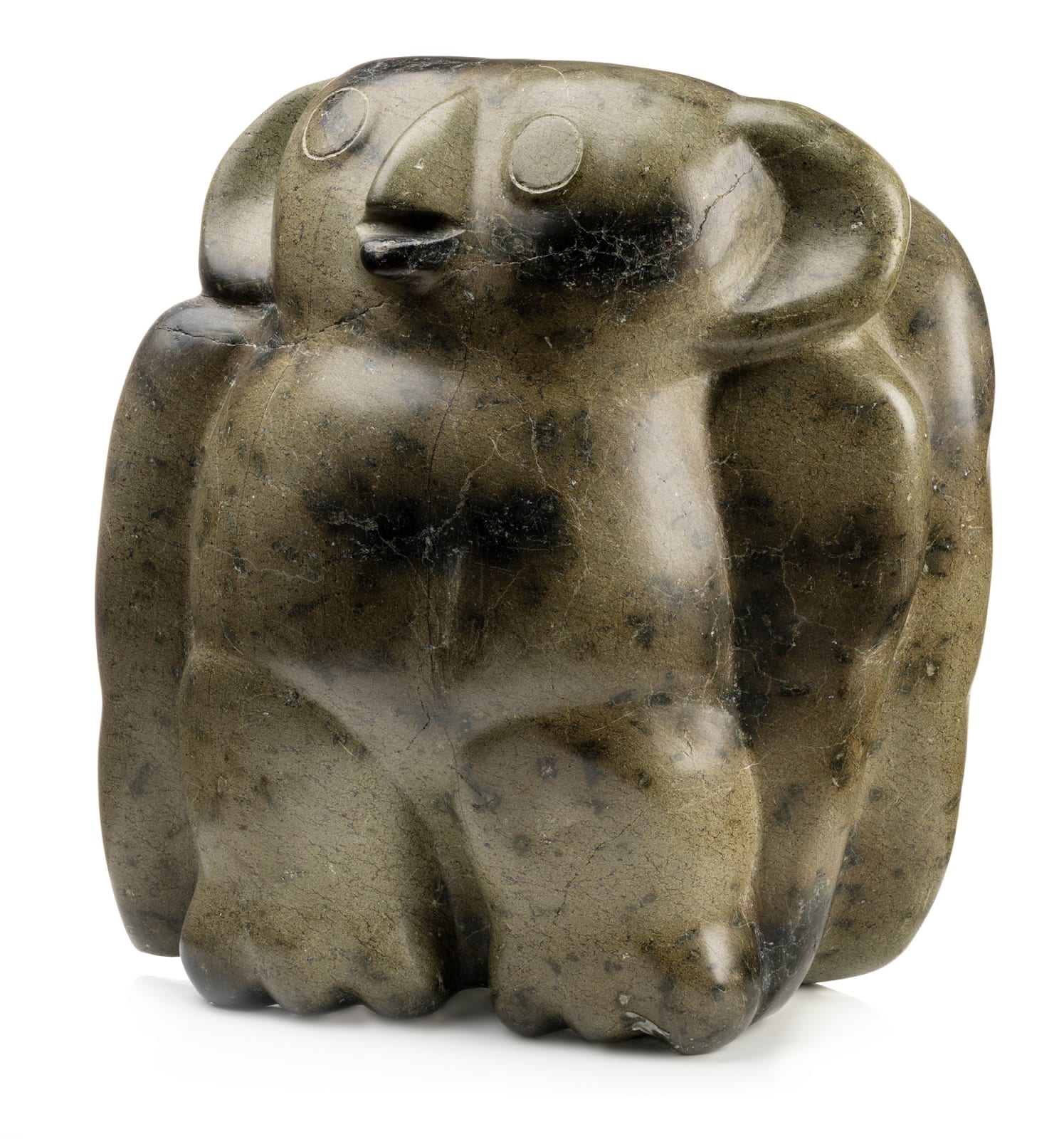-
Artworks
KENOJUAK ASHEVAK, C.C., R.C.A. (1927-2013) KINNGAIT (CAPE DORSET)
Double-Owl Figure, late 1960sstone, 16.5 x 15.5 x 10 in (41.9 x 39.4 x 25.4 cm)
unsigned;
with an unknown affixed typeset label, "1.70 Owls".Lot 30
ESTIMATE: $25,000 — $35,000
PRICE REALIZED: $26,400.00Further images
Beginning in the mid 1950s, even before she took up drawing, Kenojuak Ashevak began shaping her visions in stone. While her sculptures feature much of the same subject matter as...Beginning in the mid 1950s, even before she took up drawing, Kenojuak Ashevak began shaping her visions in stone. While her sculptures feature much of the same subject matter as her iconic prints and drawings, they offer a different texture of reality; one that is more solid, unyielding, yet nuanced. Her most prolific periods of carving were in the late 1960s and in the early 1980s, but she continued carving occasionally until about 2000. Crafted from the newly discovered stone deposit at Markham Bay, Double-Owl Figure dates to the earlier period. In this work, Kenojuak used one of her most cherished thematic threads that she explored in two dimensions – the owl – and gave the motif weight and volume, offering those acquainted with her art a creation that was both familiar in subject and innovative in form.
Double-Owl Figure is an impressively large sculpture, stylistically similar to other important pieces by Kenojuak from the late 1960s. But it is also an intriguing and enigmatic work. Apparently Kenojuak has simply created a double-owl figure: one energetic owl with its beak open and wings spread, and another more passive bird with its large wings pulled back. What makes us curious is the look of the larger bird, for it sprouts enormous “ears” almost as large as its wings. Kenojuak knew that the ears of Arctic Snowy Owls are essentially invisible, and even the ears of Horned Owls (much admired by Joe Talirunili) are nothing like these. Is it possible that this being is the “spirit double” of the owl to which it joined? More likely it is the flamboyant “alter ego” of the quieter bird. When we examine Kenojuak’s owl imagery over the years in her prints and drawings, we find dozens of examples with extravagant ear- or horn-like extensions (see Lot 54). [1] Either way, in this fully resolved composition Kenojuak has created, yet again, a stunning and highly original depiction of the birds that dominated her artistic imagination.
1. For another important and quite similar sculpture from this period, see Birds, reproduced in Jean Blodgett, Kenojuak, (Toronto: Firefly Books, 1985), fig. xxxii, p. 69, now in the Sarick Collection at the Art Gallery of Ontario; also reproduced in Swinton (1972/92), fig. 450, p. 184. The owl at the top of this composition sprouts similar “wings” from its head.
References: For similar works in the Markham Bay stone of this period, see Birds, 1969, reproduced in Jean Blodgett, Kenojuak, (Toronto: Firefly Books / Mintmark Press Ltd., 1985), fig. xxxii, reproduced p. 69 as “Private Collection,” now in the Art Gallery of Ontario (Object no. 2001/300), Gift of Samuel and Esther Sarick, Toronto, 2001.
Provenance
Waddington’s Auctions, Nov. 4-5, 2002, Lot 291;
Acquired from the above by John and Joyce Price, Seattle.
Join our mailing list
* denotes required fields
We will process the personal data you have supplied in accordance with our privacy policy (available on request). You can unsubscribe or change your preferences at any time by clicking the link in our emails.








